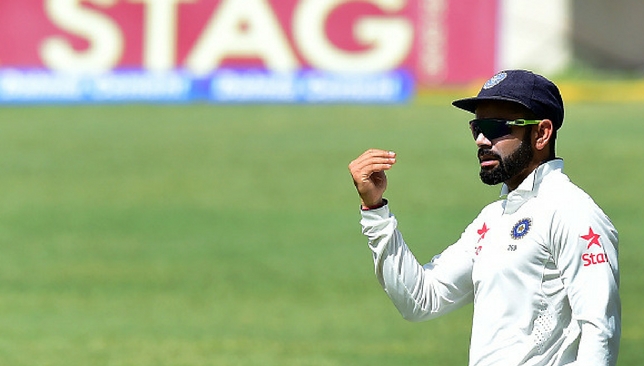
Welcome to the first match of New Zealand’s tour of India, 2016. It is a special occasion, marking the 500th Test match for the Indian cricket team. But, if you are a viewer watching the game on television, there is nothing special about it at all.
Tuning into a cricket match being played in India in 2016 feels no different than doing the same a decade earlier. The BCCI’s stance on the Decision Review System (DRS) is not only hindering the progress of the modern game, but also our viewing pleasure.
On day four of India’s second innings, the fourth ball of the 89th over from Mitchell Santner to Ajinkya Rahane rapped him on his pads. A loud appeal from the bowlers and the close fielders only led to a gentle shake of the head from umpire Rod Tucker.
Modern standards of cricket mean the next visual should’ve been that of ball-tracking, a technology which uses hawk-eye to track the trajectory of the ball and ascertain whether it would have gone on to hit the stumps or not.
The same technology used in tennis and badminton is more cut and dry, the makers themselves insisting that it cannot be 100% accurate And that is because once the ball has made an impact on the pads of the batsman, the technology, using various algorithms, predicts the path that the ball would have taken.
But, instead of that vivid visual we were treated with an arcane visual, the simple wicket-to-wicket mat and a translucent figure of the batsman. It’s like using a dial-up in an era of 4G.
So, what are you left with then? Sanjay Manjrekar as a commentator helping you understand where the ball would have gone on to hit. And in this instance, the poor soul had to change his own stance on the dismissal three times in less than a minute-and-a-half.
Whether Ajinkya Rahane was out on that delivery is now a matter of perception and imagination rather than a conclusive assertion based on technical evidence. All because the richest cricketing body on the face of the earth is so set against the technology.
The use of hawk-eye or hotspot should have little to do with the use or non-use of the DRS. Of course, all of these technologies aid umpires and players in rectifying wrong decisions, but they also add value to the coverage.
And that’s not the only problem with the BCCI’s broadcast for this series or a number of previous home series.
Sky Sports in England or Channel Nine in Australia innovate consistently to provide their viewers with the best possible experience. From the newest technologies to innovative pre, mid and post-match segments, they treat the viewer with the best possible content.
When Nasser Hussain, Michael Atherton, and Michael Holding sit and discuss a period of play in England, the broadcast becomes well-rounded and in-depth in its analysis. It’s not banal for a second.
When Mark Nicholas interviews a player, you know he is likely to be thinking out-of-the-box in some way. Sadly, there is not one Indian commentator in office at the moment that you can say the same about.
In some passages of play when the action on the field isn’t as interesting, it becomes the job of the commentators to keep audiences engaged, to keep them involved in the action and place them in the stadium.
During a Test match between England and Pakistan in the recently concluded Test series between the two sides, Hussain joined the commentary trio of David Gower, Holding, and Wasim Akram in his role as Sky Sports’ ‘Third Man’.
Hussain used a combination of the heat-map of the pitch and a graphic of varied release points to show how Mohammad Amir and Wahab Riaz were generating varied pace with changes in their release points.
The four of them then opined that this was a result of the angles of their jumps before they released the ball. It was true insight into the game that most ordinary viewers would not pick up on.
The best in the world weren’t only broadcasting, but educating us too. The BCCI should be striving to do the same, particularly because – with the resources at their disposal – they are more than capable of it.